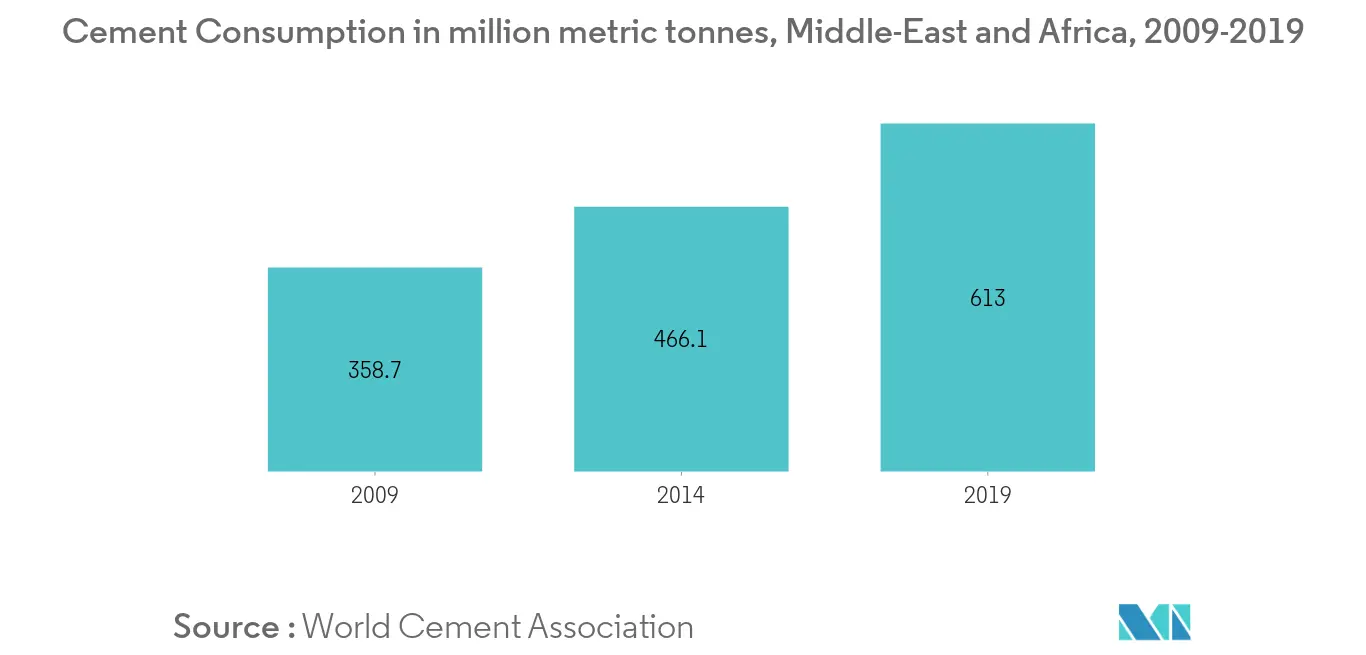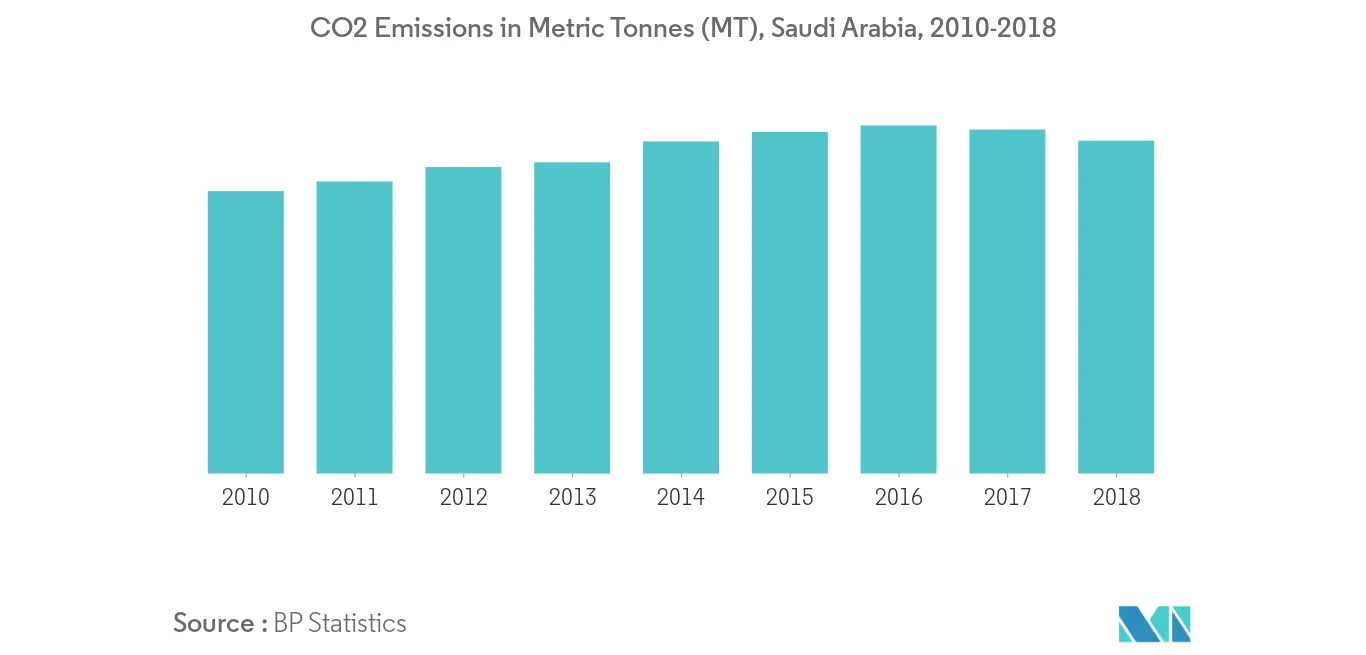Market Trends of Middle-East and Africa Industrial Air Quality Control Systems Industry
This section covers the major market trends shaping the MEA Industrial Air Quality Control Systems Market according to our research experts:
Cement Industry to Witness Fastest Growth Rate
- The cement industry is one of the major polluting industries. The major pollutants emitted include particulate matter, SO2, and NO2. To ensure the compliance to environmental standards by the cement plant operators, the governments of the respective countries conduct inspections in the plant facilities.
- Electrostatic precipitators (ESPs) were used as air quality control systems in the cement industry. However, the worldwide cement plants are increasingly utilizing fabric filters as an integral part of new plants being built, regardless of whether they are in developed or developing countries.
- The increasing construction activities globally, mainly in the developing countries of Asia-Pacific and Middle East & Africa (MEA), are expected to boost the demand for cement soon.
- In 2019, the cement consumption in Middle-East and Africa region reached 613 million metric tons. Asia-Pacific region has the highest cement consumption i.e. 3942.3 million metric ton followed by Middle-East and Africa.
- Therefore, factors such as increasing demand for cement coupled with growth in the construction industry are expected to drive the air quality control systems market in the region during the forecast period.

Saudi Arabia to Dominate the Market
- Saudi Arabia’s industrial emissions are the major contributors for air pollution, with these emissions contributing up to 50% of the hydrocarbon emissions in the country, which has led to a severe deterioration of air quality, resulting in increased government focus to mandate air quality control policies and standards, such as the Ambient Air Standard, 2012.
- Over the past few decades, the Kingdom of Saudi Arabia (KSA) has emerged into one of the leading industrial hubs in the world.
- With the growth in export-oriented industries, such as oil and gas, metals and mining, logistics, agrochemicals, and food and beverages, the KSA is one of the largest contributors to the industrial output in the region.
- Thus, with the growth in industrial activities, there has been a rise in carbon emissions in the country. In 2018, Saudi Arabia’s CO2 emission reached 571 megatonnes.
- In May 2019, UN Environment and the Ministry of Environment, Water, and Agriculture in the KSA signed a USD 25 million strategic cooperation agreement for strengthening environmental protection and safeguarding natural resources in the Kingdom. UN environment will offer technical experts in the fields, such as environmental laws, regulations, and standards, air quality management, climate change, and waste management, thus contributing to the environmental component of the Saudi Vision 2030.
- Therefore, due to these regulations and policies, the demand for air quality control systems, such as FGD, SCR, SNCR has been growing, thus contributing to the growth of the market in focus.

